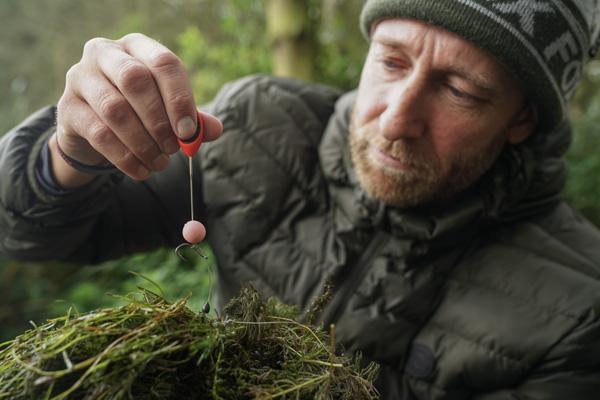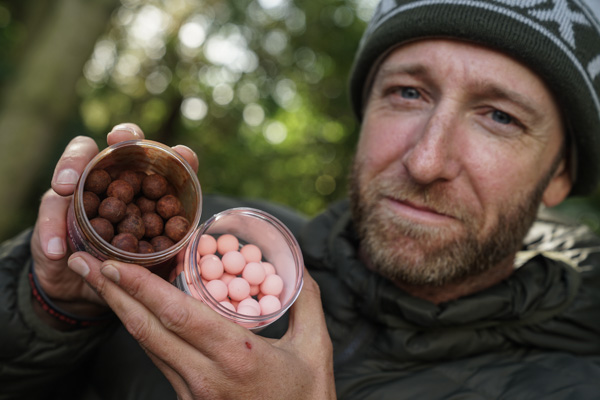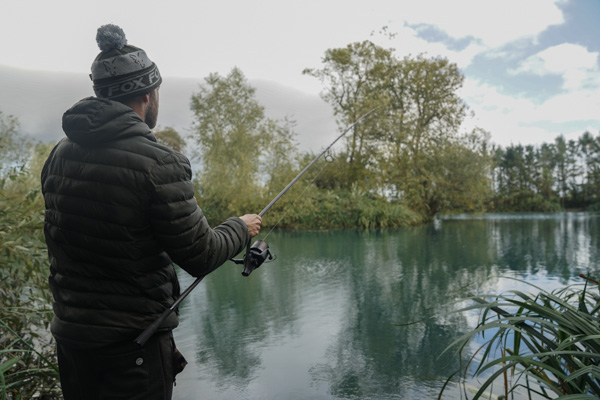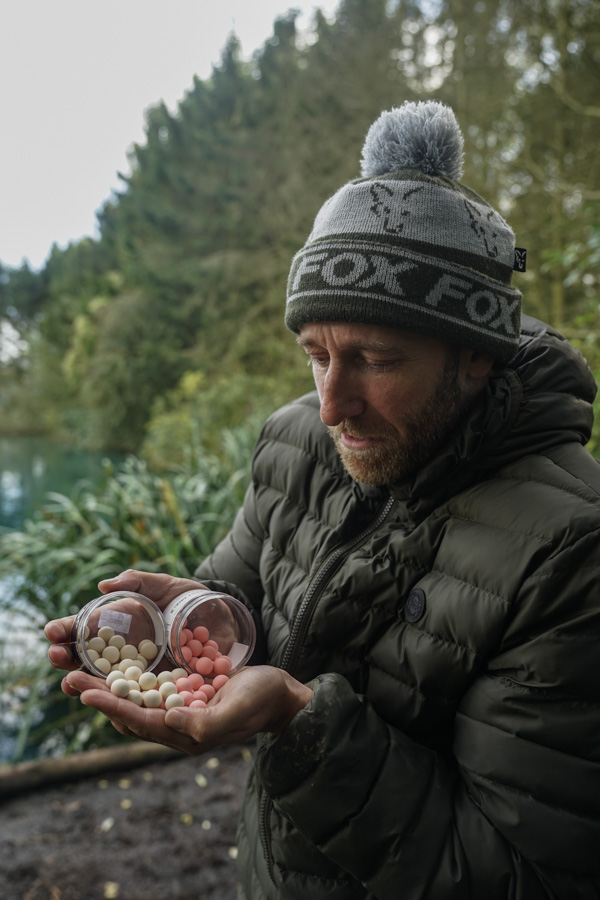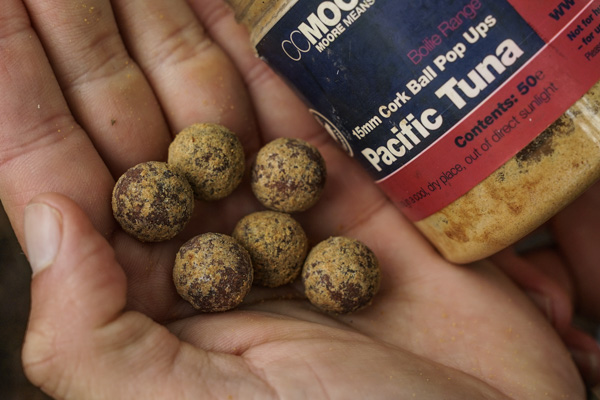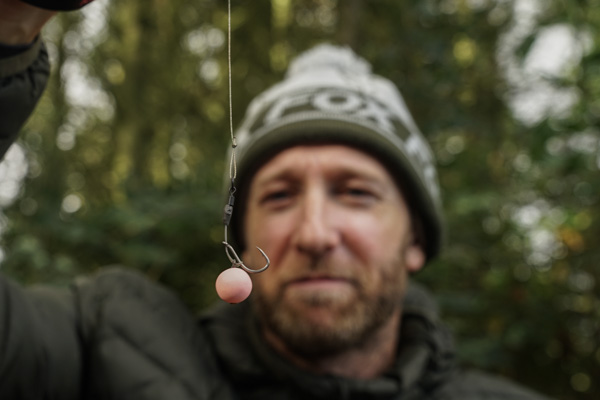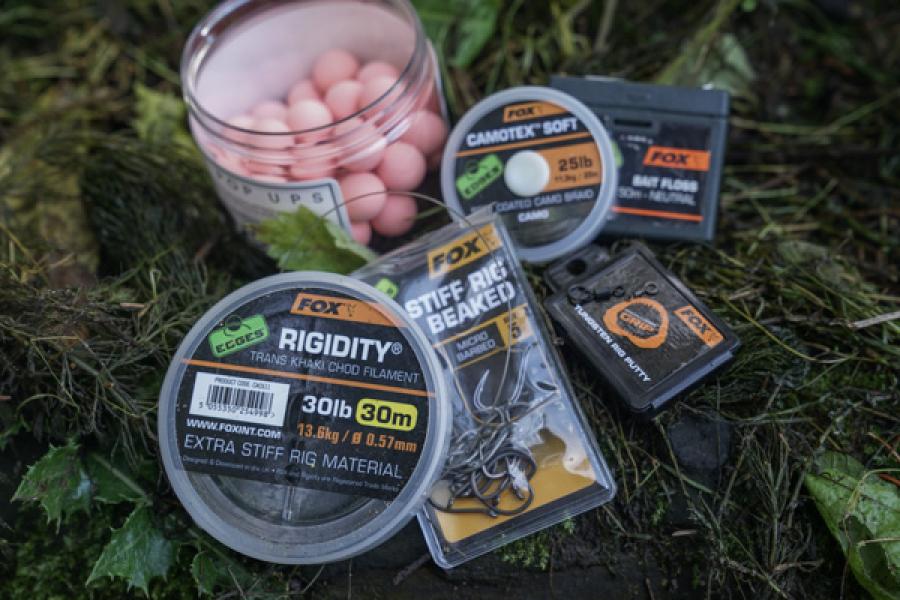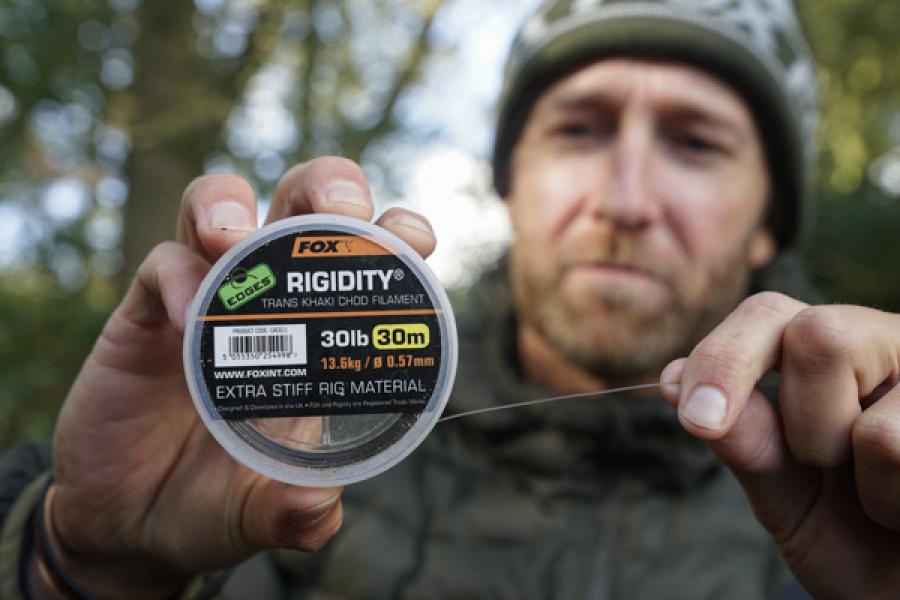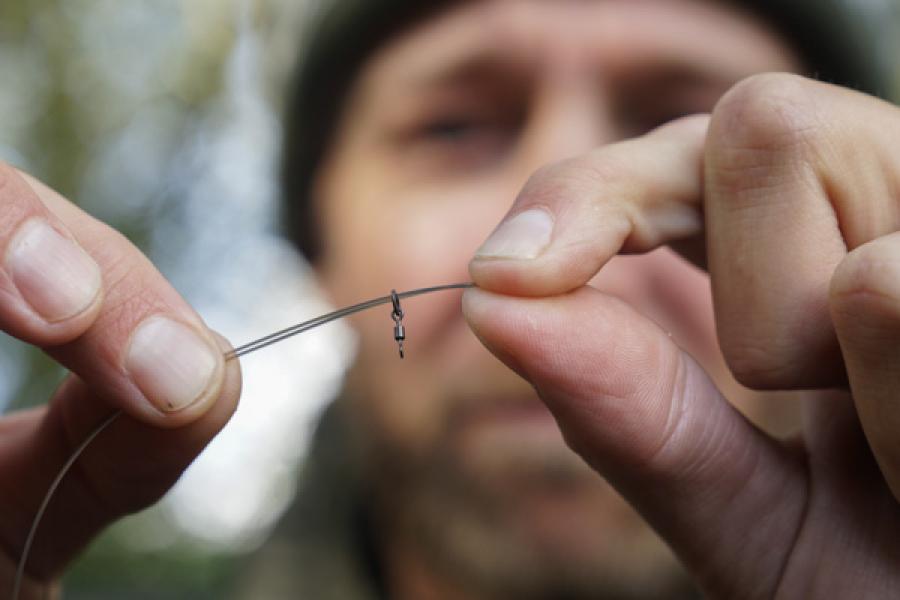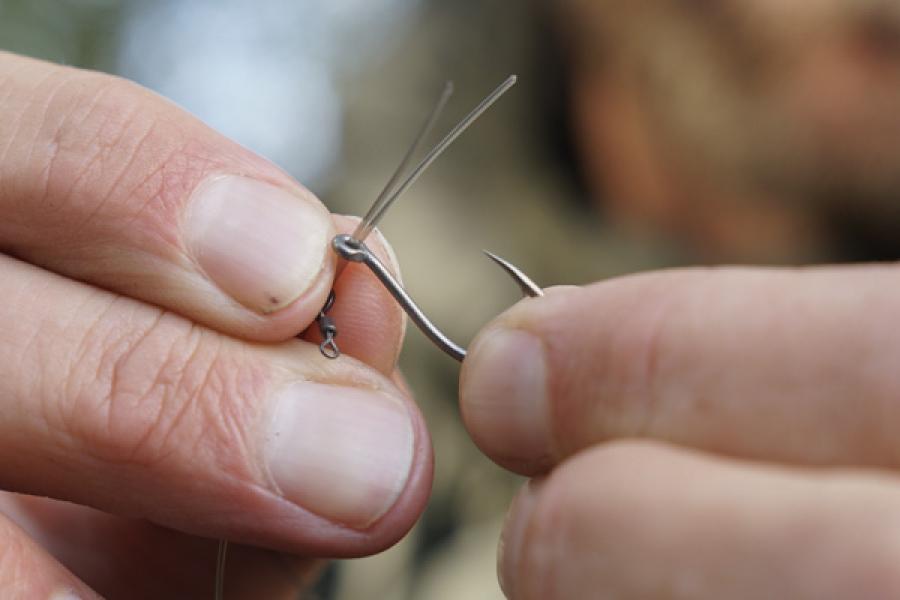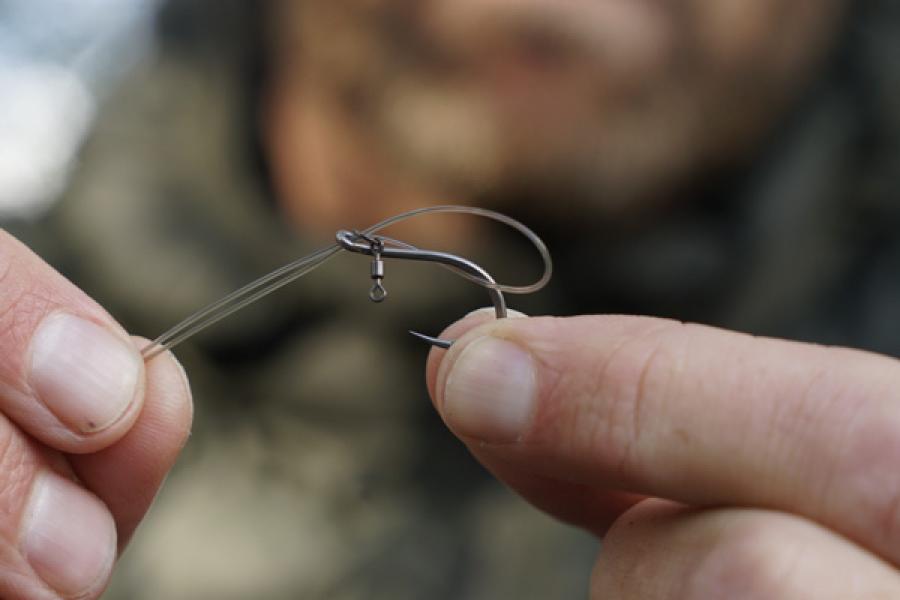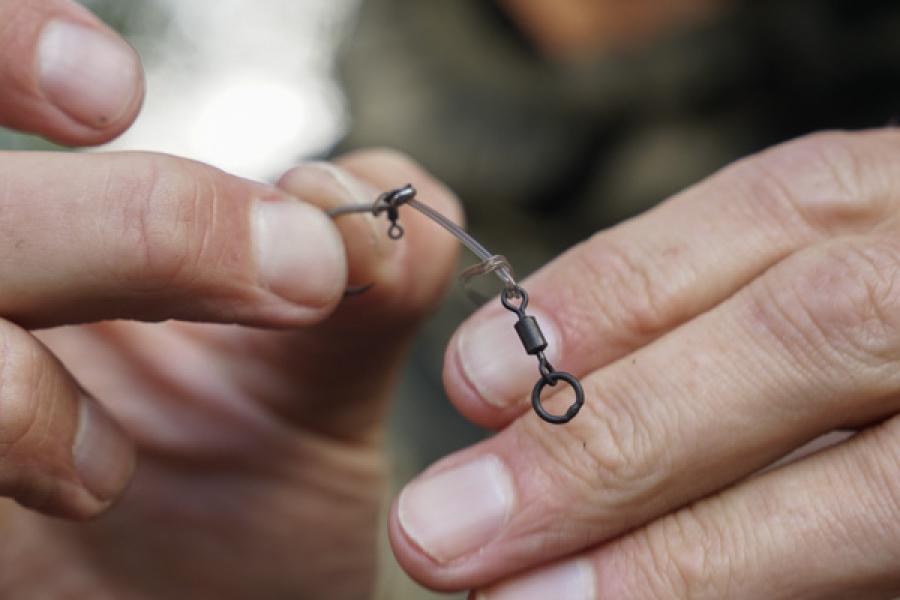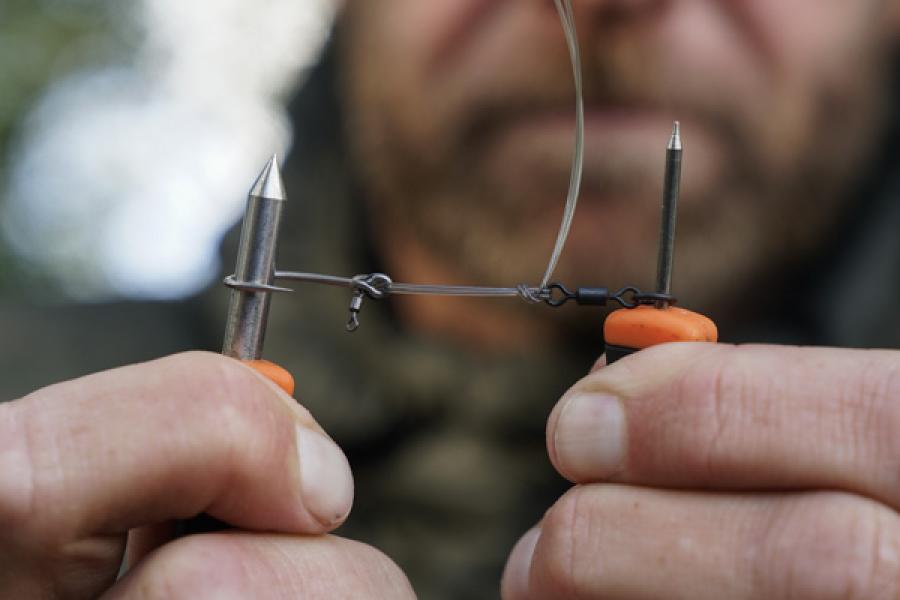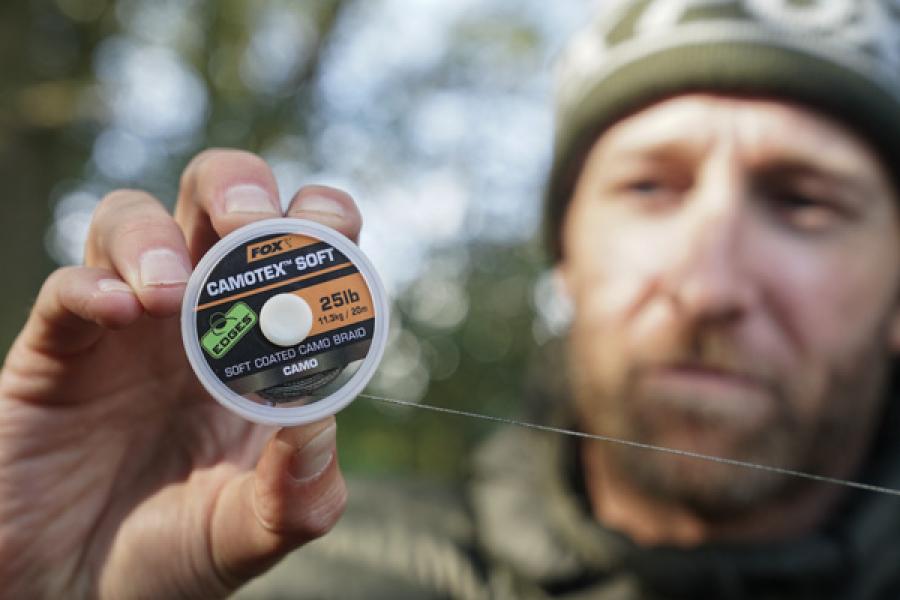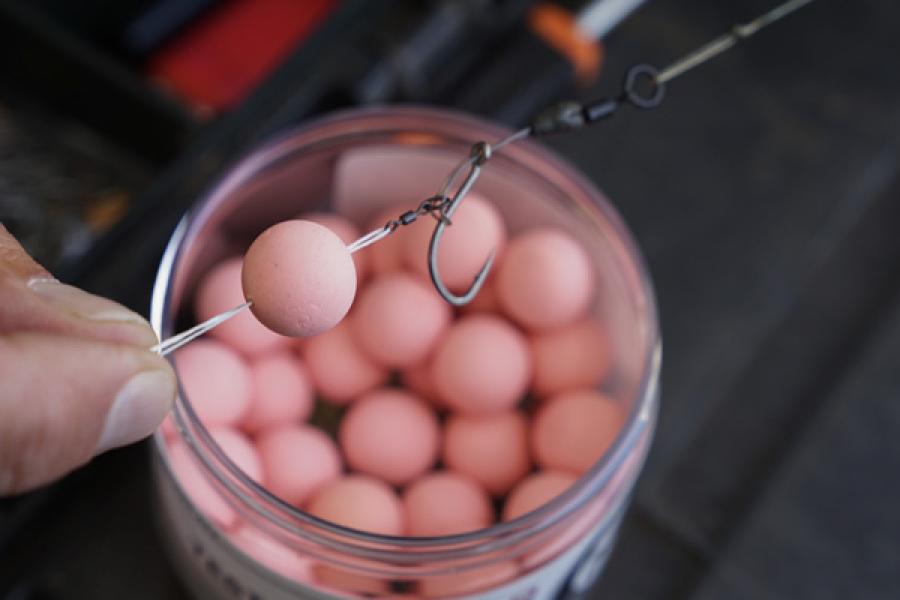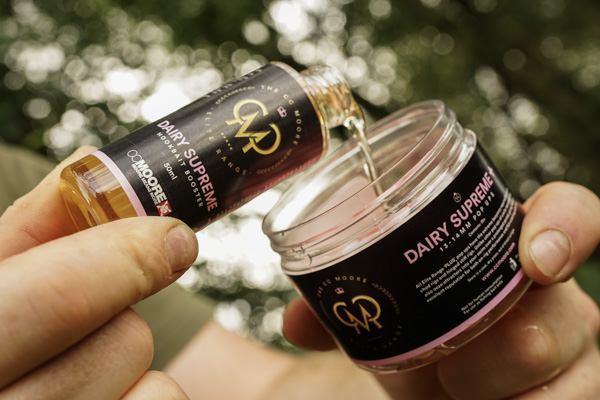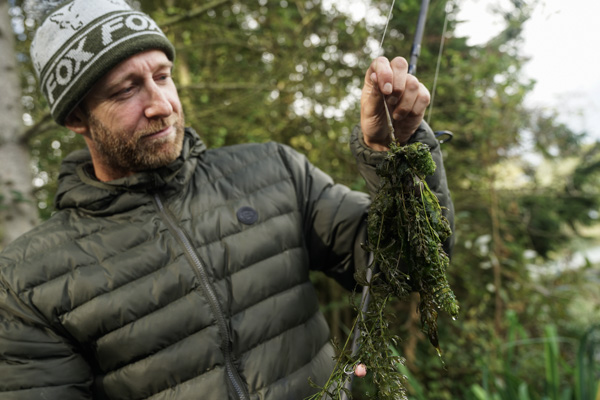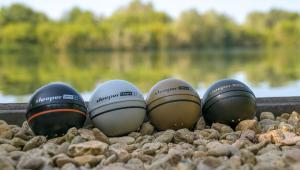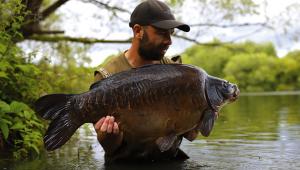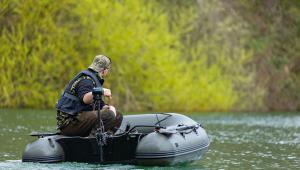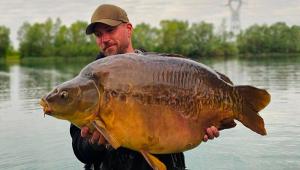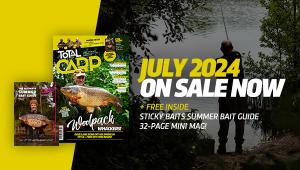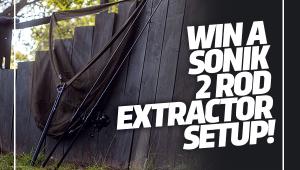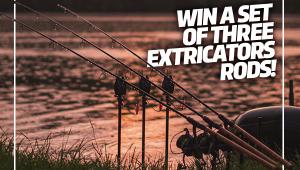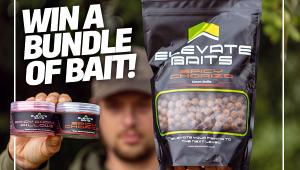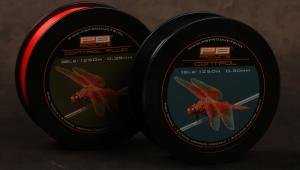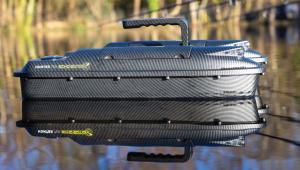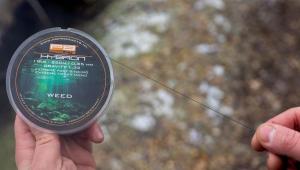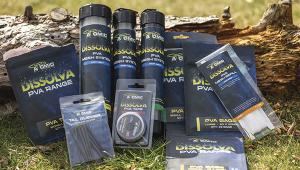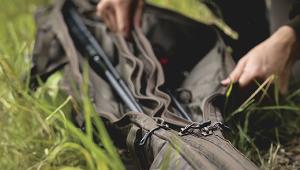This finally leads me on to the boosting of my pop-up hook baits, which is something that I do at all times of year for both my match the hatch and highly visual hook baits. I genuinely believe, certainly in the winter, you cannot have an over-boosted hook bait. The more attraction being leaked from that hook bait in my eyes, the better.
For boosting my match-the-hatch hook baits I will add a very light glaze of CC Moore Hot Chorizo liquid to my corkballs. I will allow this to soak in for around a week before finishing the baits off with a light dusting of GLM powder or Crayfish Meal.
When boosting my bright, coloured hook baits, I use the matching hook bait booster to crank up the attraction. Be careful not to flood the hook baits with liquid, but instead just a light glaze each time. These can then be pimped with the addition of betaine powder, to enhance the sweet, soluble signals emitted by the hook baits.
Now is the time to be putting those pop-up hook baits to good use and this certainly features heavily in my approach during these colder months. As with all my fishing, location is key, but once you have found them, if the situation dictates the use of a pop-up, be confident in what you are using and consider exactly what you are fishing over.
